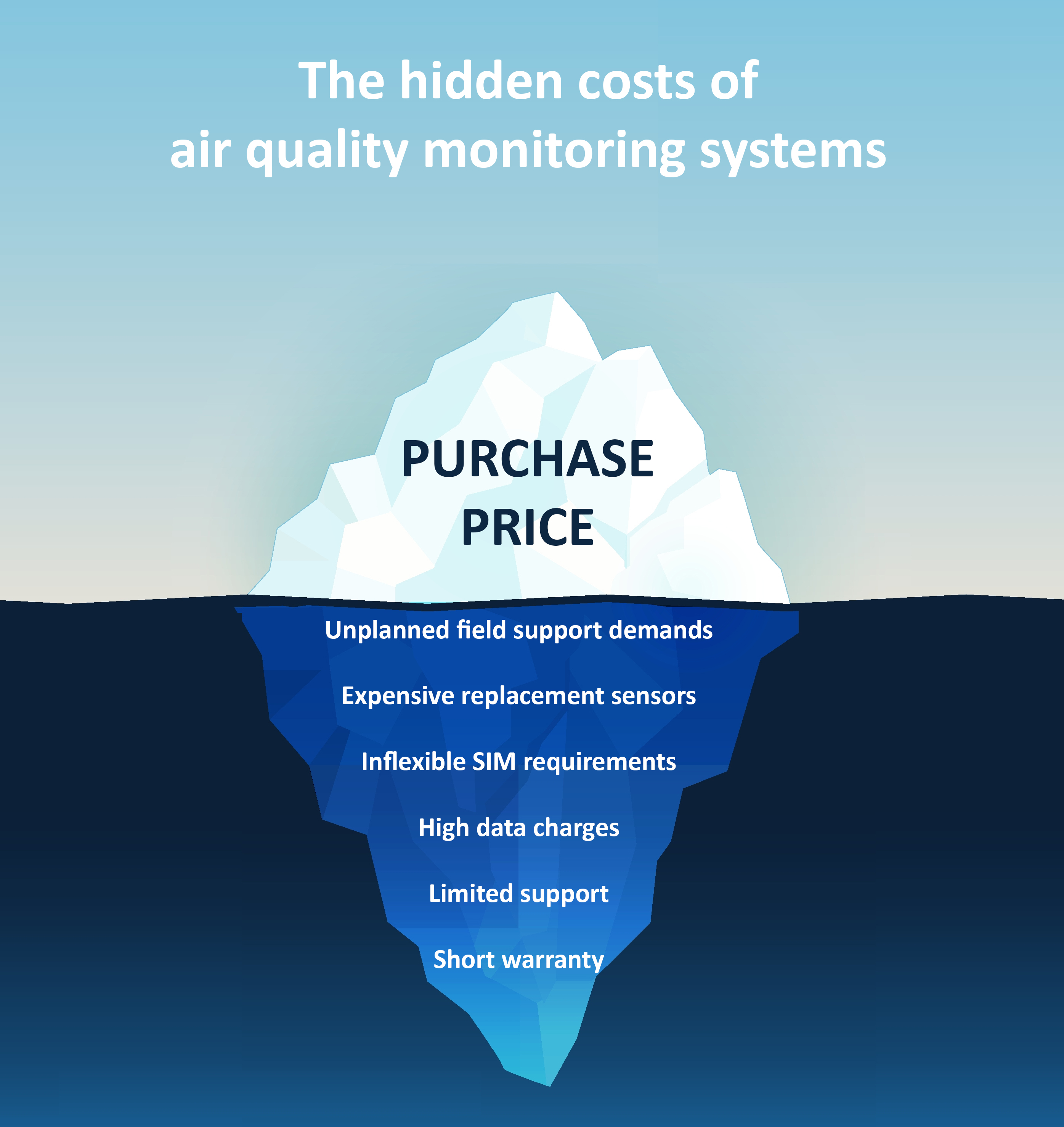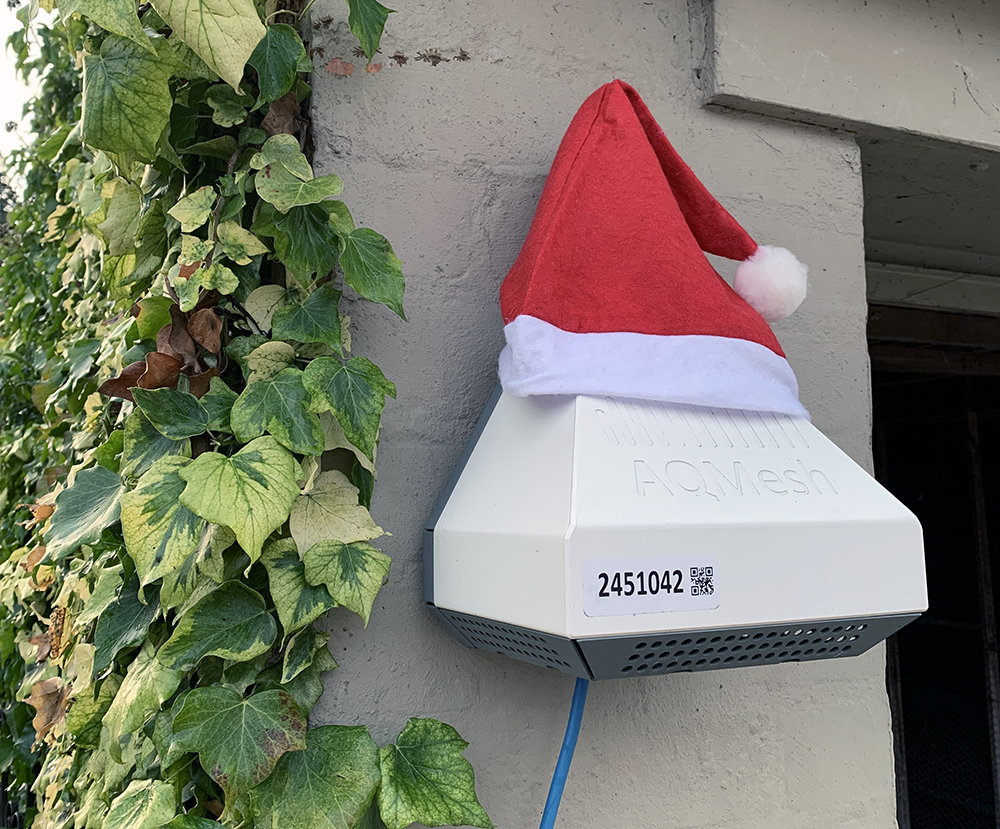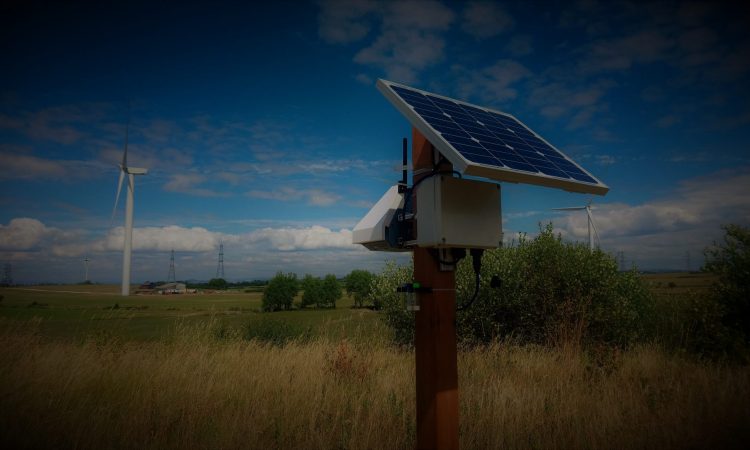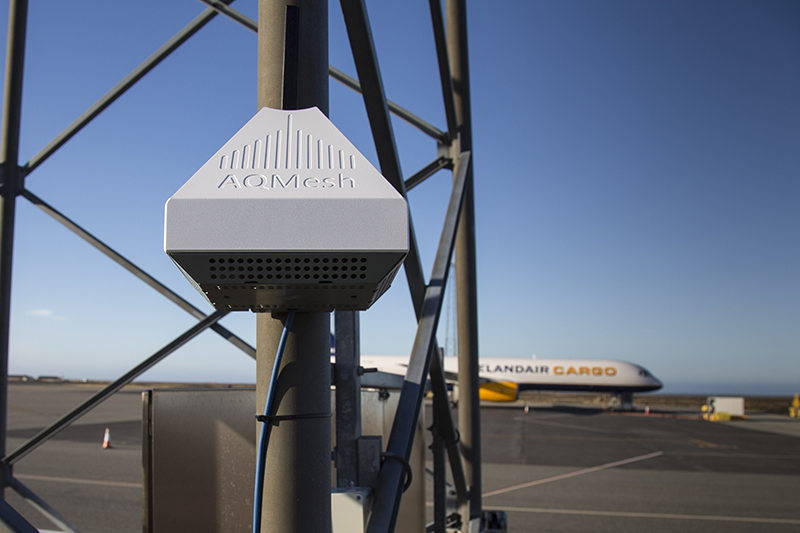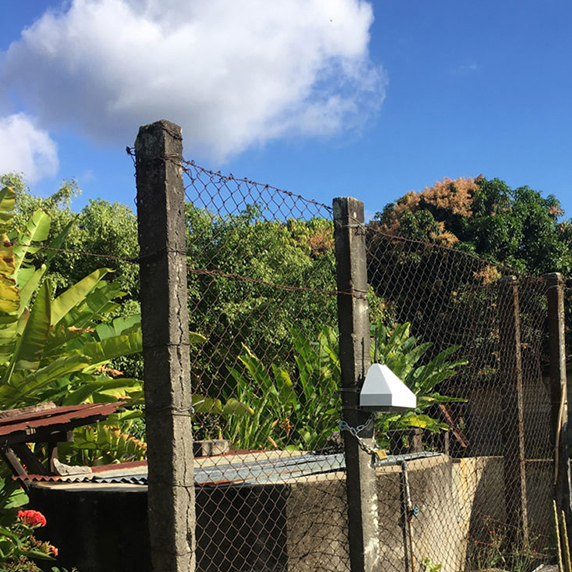 AQMesh is currently in use in Nicaragua, monitoring air quality in communities living near Masaya volcano. The six AQMesh pods have been used to show variations in volcanogenic SO2 and PM levels at different times and at different locations across the area.
AQMesh is currently in use in Nicaragua, monitoring air quality in communities living near Masaya volcano. The six AQMesh pods have been used to show variations in volcanogenic SO2 and PM levels at different times and at different locations across the area.
The pods, which have independent power and communications so they can be mounted where required, were installed in March 2017 as part of a research project funded by the Global Challenges Research Fund: Unseen but not unfelt: resilience to persistent volcanic emissions (UNRESP). The project is led by the University of Leeds and is a multi-partner collaboration of several universities in the UK and Nicaragua, as well as Nicaragua’s natural hazards observatory INETER and the Icelandic Met Office.
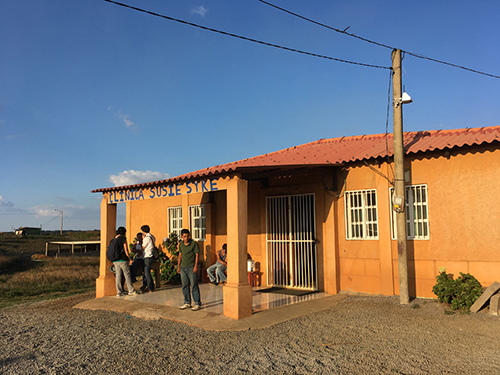 The Global Challenges Research Fund supports projects focusing on challenges faced by developing countries, aiming to build resilience to natural and anthropogenic hazards. The aim of UNRESP project is to devise an early warning system for dangerously high levels of air pollution, specifically SO2 and particulate matter. As this is a 12-month foundation phase project, the data are not currently being made public but will be put in the hands of local authorities and other stakeholders when the warning system is refined. AQMesh readings are being compared to predictions from a pollution dispersion model, CALPUFF, which requires relatively little computing power. The CALPUFF model has been successfully used for air pollution forecasting at other volcanic sites, such as a recent eruption in Iceland which did not produce ash but emitted twice as much SO2 as all European Union countries combined and caused repeated air pollution in Iceland for 6 months.
The Global Challenges Research Fund supports projects focusing on challenges faced by developing countries, aiming to build resilience to natural and anthropogenic hazards. The aim of UNRESP project is to devise an early warning system for dangerously high levels of air pollution, specifically SO2 and particulate matter. As this is a 12-month foundation phase project, the data are not currently being made public but will be put in the hands of local authorities and other stakeholders when the warning system is refined. AQMesh readings are being compared to predictions from a pollution dispersion model, CALPUFF, which requires relatively little computing power. The CALPUFF model has been successfully used for air pollution forecasting at other volcanic sites, such as a recent eruption in Iceland which did not produce ash but emitted twice as much SO2 as all European Union countries combined and caused repeated air pollution in Iceland for 6 months.
“Air pollution is a chronic and serious hazard affecting many developing countries, but there is generally very limited capability to monitor and mitigate it. AQMesh provided us with an opportunity to install the first AQ monitoring system in Nicaragua – the pods are very cost-effective which is of utmost importance for the local setting, yet they provide data that are of high quality. Real-time data on the ground is vital for quantifying and understanding the duration, peak concentration and frequency of high air pollution episodes, which are factors that directly impact human health”, commented Dr. Evgenia Ilyinskaya who is leading the project. The UNRESP team started by hiring five pods for three months via UK distributor, Air Monitors Ltd. as well as purchasing one AQMesh pod for long-term observations. The pod rental has been extended for another three months and the practicality of long-term use of this sort of equipment is being evaluated, including the use of rechargeable batteries or solar power. The team is working closely with local communities and such stakeholders taking custody of the equipment intended to protect their own community mitigates against some risks, such as theft or damage.
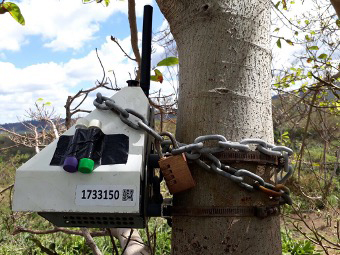 Although there is no reference station at the site, diffusion tubes have been used to take measurements which can be compared to the 15-minute average, real-time readings from AQMesh. Whilst EU air quality standards focus on the short-term high concentrations typical of SO2 from an industrial source the UNRESP team is trying to understand the impact of long-term elevated SO2 on the population. Having SO2 measurements with high time and spatial resolution is critical for this and the plan is to potentially create an alert for accumulated concentration of pollutants.
Although there is no reference station at the site, diffusion tubes have been used to take measurements which can be compared to the 15-minute average, real-time readings from AQMesh. Whilst EU air quality standards focus on the short-term high concentrations typical of SO2 from an industrial source the UNRESP team is trying to understand the impact of long-term elevated SO2 on the population. Having SO2 measurements with high time and spatial resolution is critical for this and the plan is to potentially create an alert for accumulated concentration of pollutants.
The draft proposal for a follow-on project at the site states the collaboration with AQMesh identified ways of improving the equipment for monitoring volcanogenic pollution, which tends to be much more corrosive than ‘typical’ urban pollution. Dr. Evgenia Ilyinskaya commented, “the AQMesh equipment is extremely cost-effective while providing data quality comparable with EU-certified monitoring. One AQMET station was purchased during the UNRESP foundation phase and it will remain in Nicaragua to form part of the permanent AQ network.”

